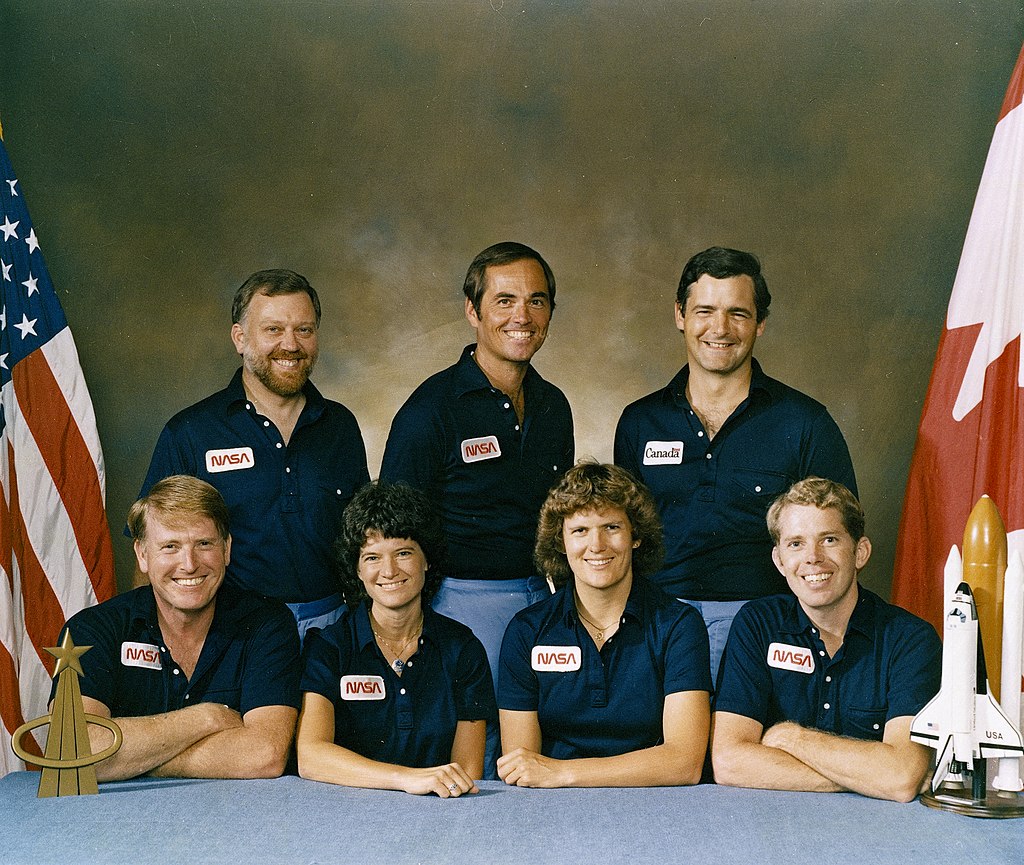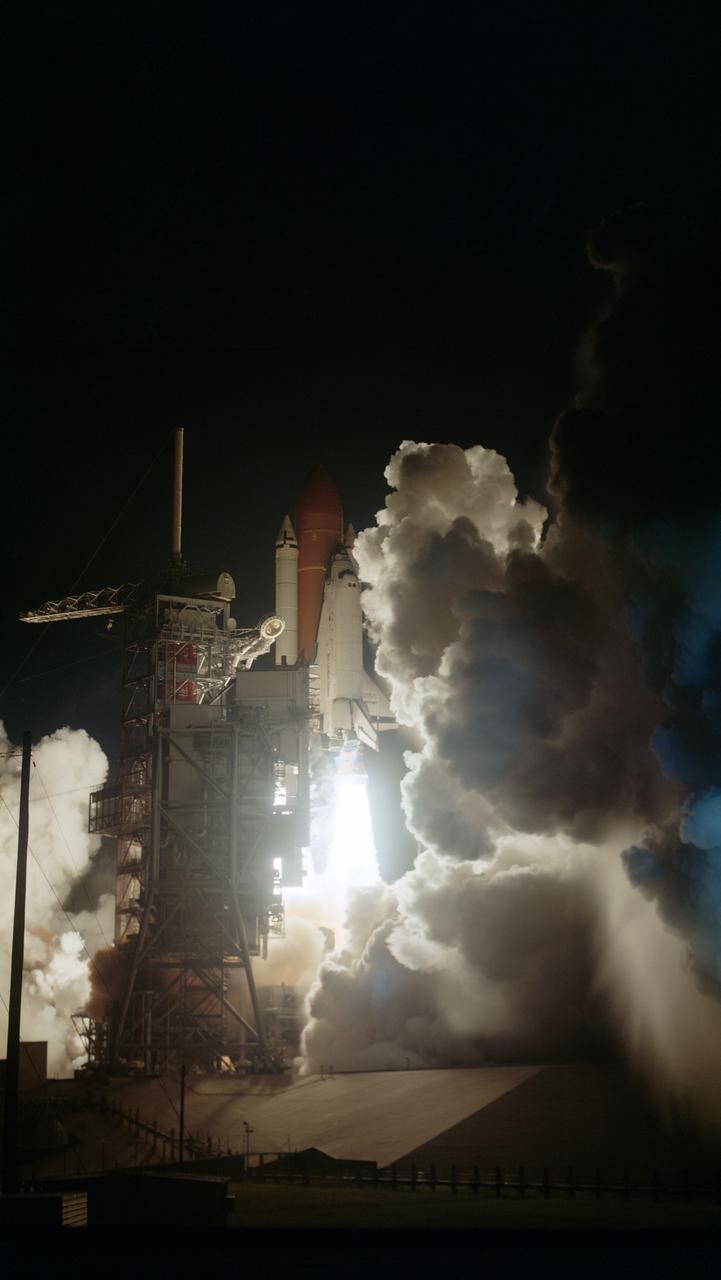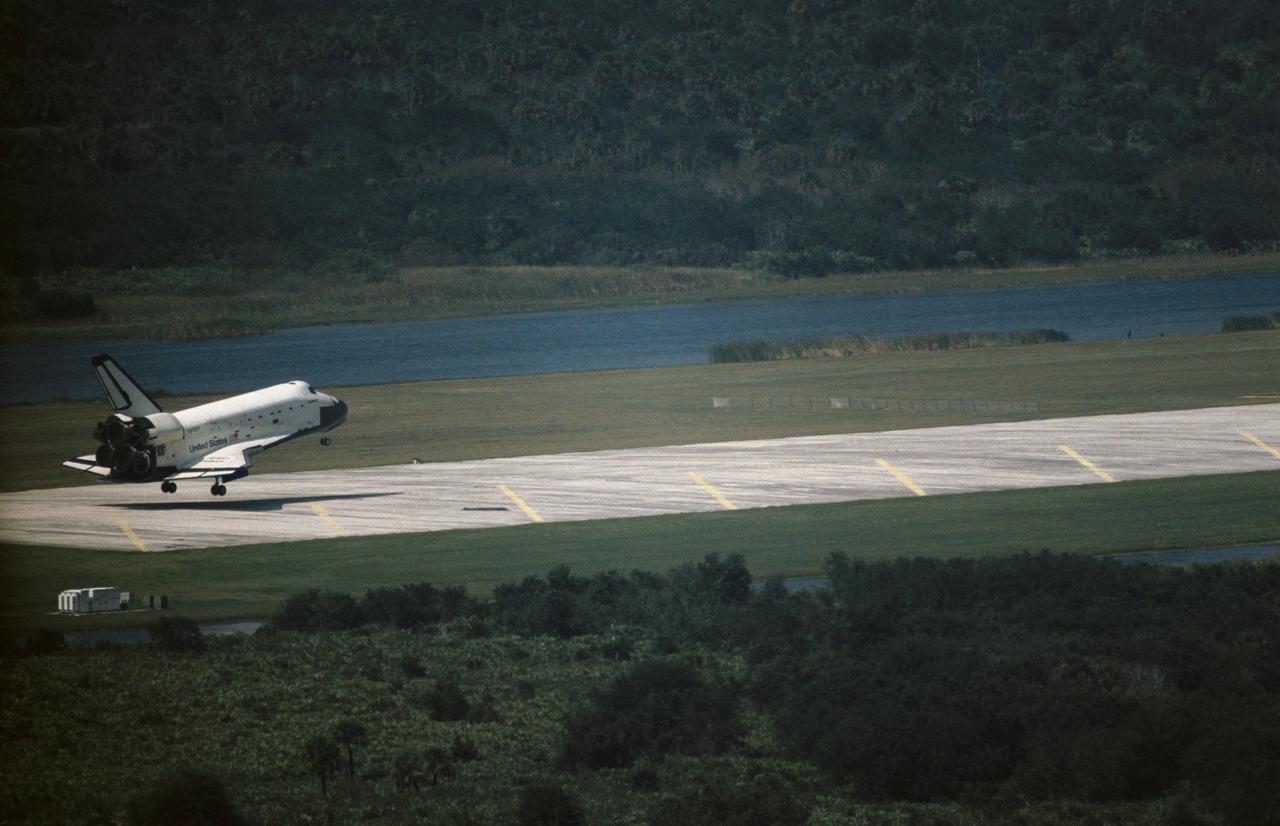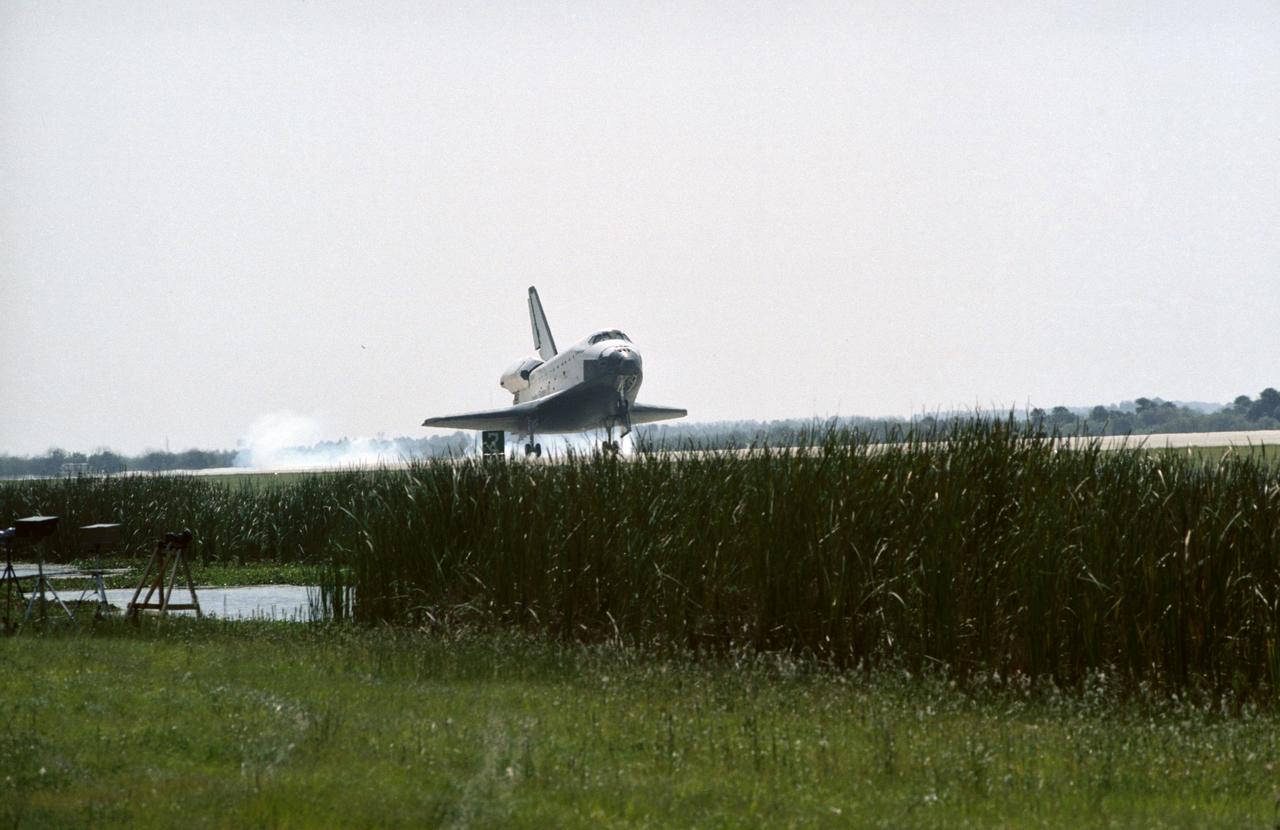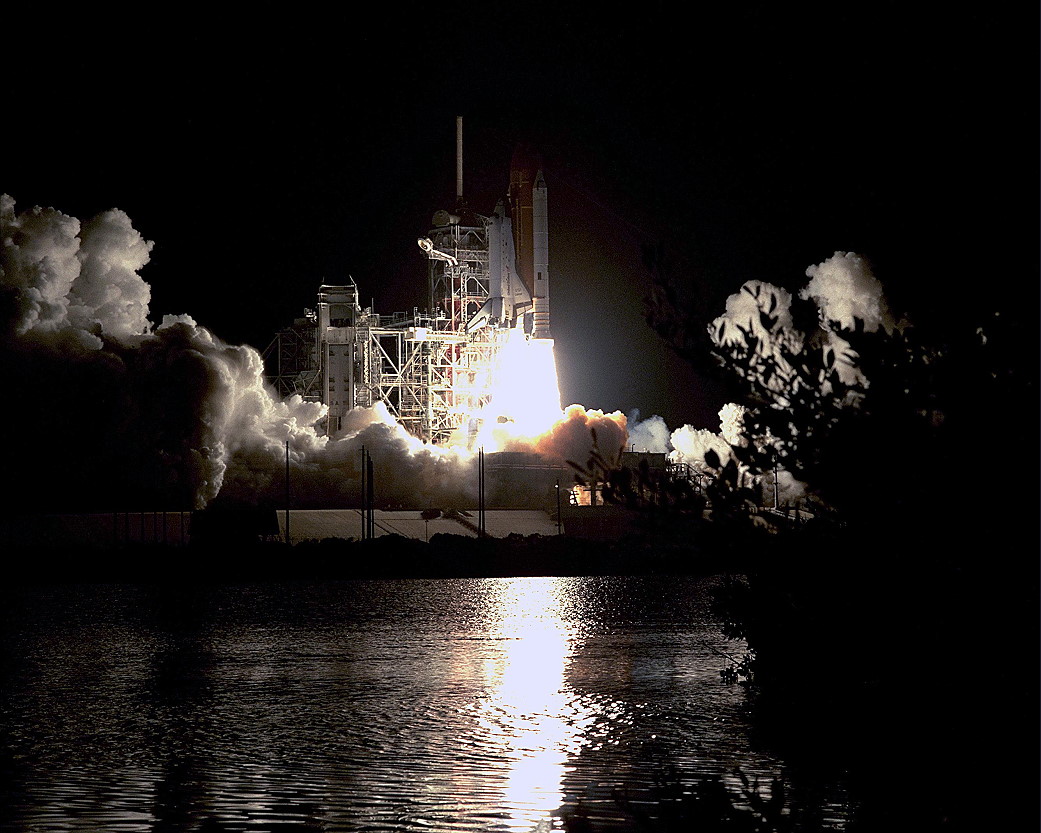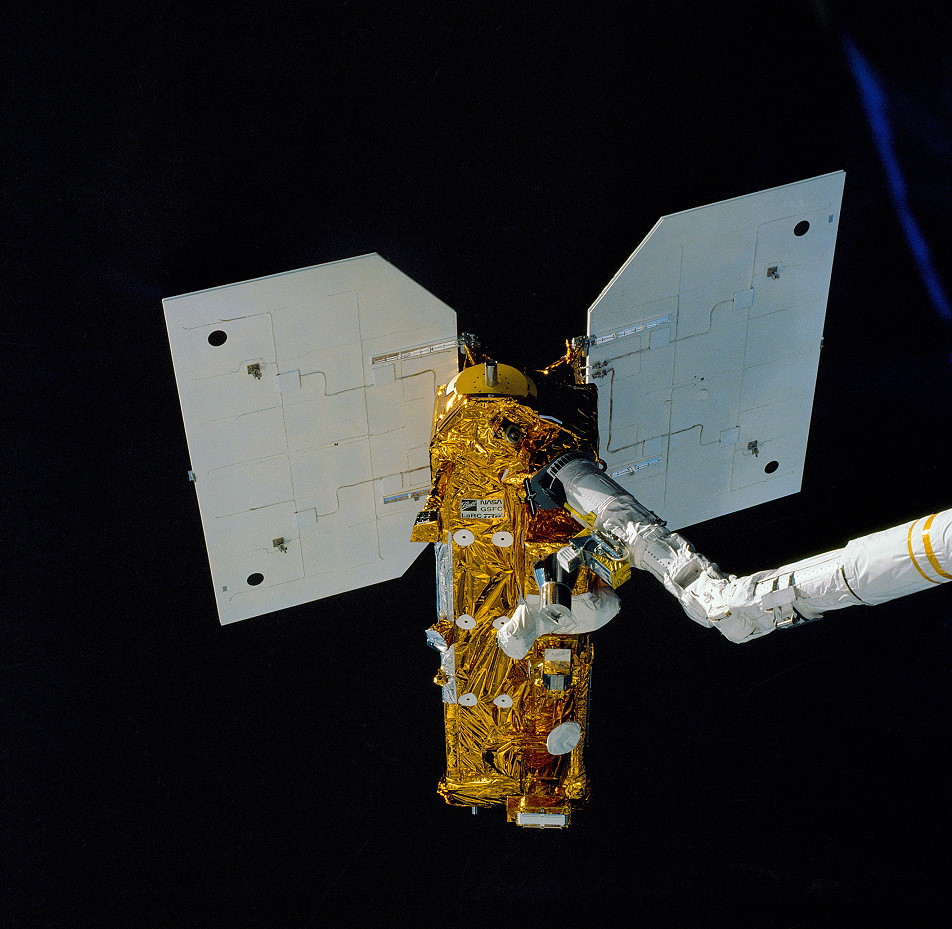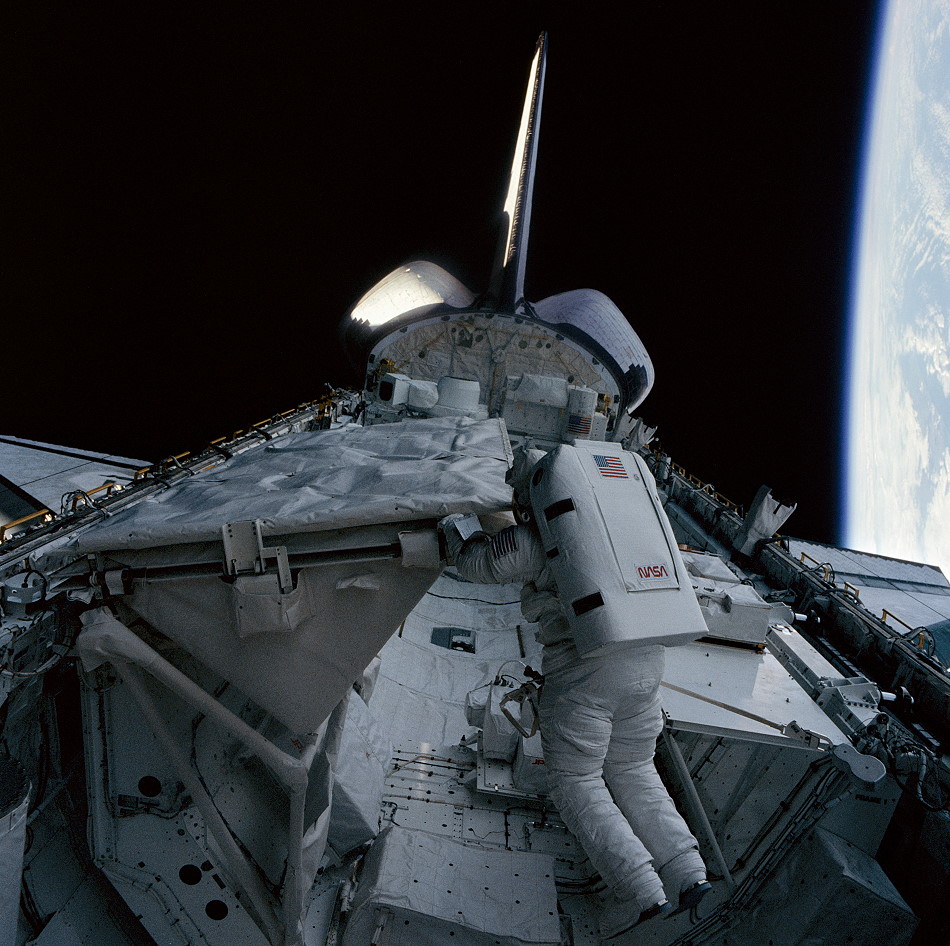STS-41G Fact Sheet
By Cliff Lethbridge
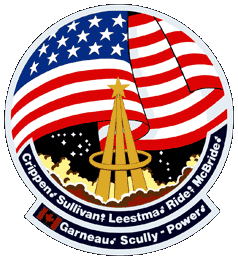
STS-41G — Challenger
13th Space Shuttle Mission
6th Flight of Challenger
Crew:
Robert L. Crippen, Commander
Jon A. McBride, Pilot
David C. Leestma, Mission Specialist
Sally K. Ride, Mission Specialist
Kathryn D. Sullivan, Mission Specialist
Paul D. Scully-Power, Payload Specialist
Marc Garneau, Payload Specialist
Orbiter Preparations:
Tow to Orbiter Processing Facility – April 18, 1984
Rollover to Vehicle Assembly Building – September 8, 1984
Rollout to Launch Pad 39A – September 13, 1984
Launch:
October 5, 1984 – 7:03:00 a.m. EDT. Launch occurred as scheduled with no delays.
Landing:
October 13, 1984 – 12:26:38 p.m. EDT at Runway 33, Kennedy Space Center. Rollout distance was 10,565 feet. Rollout time was 54 seconds. Mission duration was 8 days, 5 hours, 23 minutes, 38 seconds. Landing occurred during the 133rd orbit.
Mission Summary:
This was the first space flight to include two women. Astronaut Sullivan became the first woman to walk in space. Astronauts Leestma and Sullivan conducted a spacewalk on October 11, 1984 which lasted 3 hours, 29 minutes. The primary task of the sole spacewalk of the mission was to test the Orbiter Refueling System (ORS) using toxic hydrazine fuel. ORS successfully demonstrated that on-orbit refueling of satellites from the Space Shuttle was possible. As the astronauts prepared to conclude the spacewalk, the airlock hatch cover escaped into space. Astronaut Crippen guided the Shuttle to pursue the hatch cover, and it was successfully grasped by astronaut Leestma.
The Earth Radiation Budget Satellite (ERBS) was deployed. Office of Space and Terrestrial Applications-3 (OSTA-3) carried three experiments in the payload bay. Other payloads included the Large Format Camera (LFC), IMAX camera system, Canadian Experiments (CANEX), Auroral Photography Equipment (APE), Radiation Monitoring Equipment (RME), Thermoluminescent Dosimeter (TLD) and eight GAS experiments.
SELECTED NASA PHOTOS FROM STS-41G
